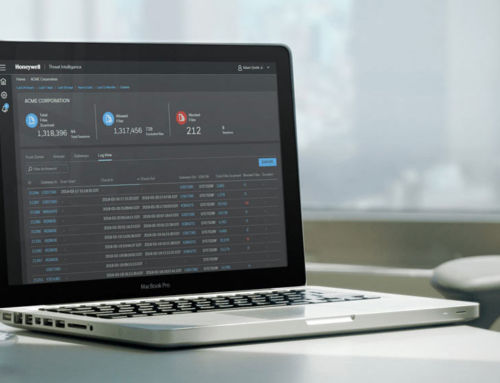The New Era of Charter Flight Aggregation
An payment solution company had already offered something ground-breaking in the US aviation market: an open platform that allowed both brokers and operators to transact without any particular industry affiliation. Their platform had no upfront costs or monthly subscription fees, instead charging a nominal transaction fee to the broker and operator when the parties confirmed a trip using the platform.
For the next iteration of their product, stakeholders wanted to integrate services into the platform that went beyond simply booking flights. They envisioned the means for customers to order fuel, maintenance parts, and other peripheral services. In addition to extending their service to new revenue streams, these services would each take advantage of the company’s proprietary payment system, which brought high levels of security to an industry with large transactions.
The integration of multiple service offerings had the potential to drive customer engagement and revenue much higher than by merely providing the means to book the flights.
Executives wished to debut the new functionality at a tradeshow just five months into the future, offering them a competitive advantage at a time when buyers were actively seeking solutions. They believed that releasing these services at the tradeshow would expose their offering to additional aircraft charter services companies, creating demand for others to join the growing ecosystem.
But with an internal development team busy with their own projects and the tradeshow swiftly approaching, time was tight. They turned to Ascendle to provide a solution.
A Simplified Strategy
As a first step, Ascendle was engaged to develop a strategy for delivering a complete, usable application of the new functionality in time for the tradeshow.
During the strategy phase, the Ascendle team sat down with stakeholders to map out the vision of the Marketplace application. Ascendle used their proven process of Roles and Features Brainstorming, Feature Prioritization, User Story Creation, and User Story Estimation during the strategy phase.
Results were presented as a prioritized list of user stories, representing the expected outcome of each piece of functionality that had been identified.
During the feature brainstorming sessions, it was determined that any service lines added to the platform would require common e-commerce capabilities. An important factor to consider was that the average order volume required a platform without onerous transaction fees.
The team initially considered creating a custom-built e-commerce system, but quickly pivoted to using a commercially available platform due to the time-sensitivity of the project. BigCommerce was ultimately decided as the best fit for this project, given the rich feature set and favored positioning as a service often selected in industries with higher average dollar transactions.
Once the e-commerce platform was chosen, a “walking skeleton” for the project was constructed. The walking skeleton is the framework the Ascendle team uses to ensure that – when completed – the end-to-end functionality is sound. Moreover, this allows the architecture and functionality to evolve in parallel, also saving massive amounts of time along the way.
While the BigCommerce platform decision and walking skeleton were both critical to saving time, at that point only ten weeks remained until the tradeshow, so the Ascendle team launched head-first into the custom integration.
Connecting the Dots
With the strategy in place, the Ascendle team began two-week production sprints.
At the beginning of the production phase, an aircraft parts store was chosen as the first service line to be added to the platform. In doing so, this allowed the ability for parts suppliers to market their unique offerings with accurate inventory and pricing within the platform.
Choosing a store from the list would open the specific BigCommerce online store for that supplier. While each store was managed by the supplier, an identical look and feel extended across all stores, providing a seamless brand experience.
The store was integrated into the existing payments system to offer one brand experience, despite being fed by multiple, different brands and service offerings.. Regardless of which provider’s store was being used, navigation bars across the entire system were also standard, so users could return to the other areas of the existing payment system at any time. Users then browsed or searched for the items that they needed from each store and checked out using their established secure proprietary payments system.
When completed, the connector provided a series of API calls to allow all stores to stay synchronized with the payments system. Users were able to:
- Connect or disconnect an online store with the payments system.
- Send new orders placed at an online store to the existing system so they could be processed.
- Allow the payments system to communicate back with the online stores about the order status. Each BigCommerce store had an administrative back end that allowed the store manager to track orders. The Connector then synchronized the order status across all the BigCommerce stores.
With our client’s aggressive plans for expansion and several service partners requiring both dynamic inventory and pricing capabilities, REST API was chosen for its flexibility in scaling. Ascendle also utilized Azure DevOps, which – when coupled with the team’s agile practices – allowed for swift, frequent product deployments.
A Seamless User Experience
From the user’s perspective, they never leave the single platform. Every store seems like an extension of the base system, with the same look and feel. The Orders area of the system allows users to see the orders that they have placed with all the different vendors and service providers.
From the Service Provider’s perspective, they use their BigCommerce store back end to see the orders that are placed by the different users and know the status of all the orders at their store. They use their BigCommerce back end to keep their inventory of products or services up to date.
The Value of Time
Utilizing the technologies described above, the Ascendle team built, tested, and completed the project in less than 8 weeks of the development phase, This included the configuration and customization of a BigCommerce marketplace application and the development of the separate connector application, linking the BigCommerce and client systems.
At the tradeshow, the demonstration of the system went flawlessly. Members from the Ascendle team attended the event alongside our client’s staff and answered questions from potential partners interested in adding their services to the platform. Without question, the purpose of the engagement was achieved, and the product was a success.
Beyond building the product in a short timeframe, the Ascendle team provided a seamless engagement for the client. While the innovation could have been achieved by the company’s internal development team, they did not have the capacity to meet the goal of having an application in time for the tradeshow. Regardless of the possible funding they could have found for the project, the timeframe was an impossible barrier. As one stakeholder put it, “We bought time from you.”
As always, the Ascendle team worked as a true extension of our client, ensuring that the developers had a firm understanding of the project requirements, without requiring stakeholders to specify every implementation detail. One of the key executives said that not having to micromanage every decision made the engagement feel like “being on vacation.”
By partnering with Ascendle, our client capitalized on an idea that provided a big opportunity to differentiate their services. Ascendle transformed that vision into reality, developing a high-quality seamless application without issue, and within an ambitious timeframe. When you’re ready to relieve your team of the pressure to build a quality product, let us know. Our team is ready to tackle even the most intimidating projects.




